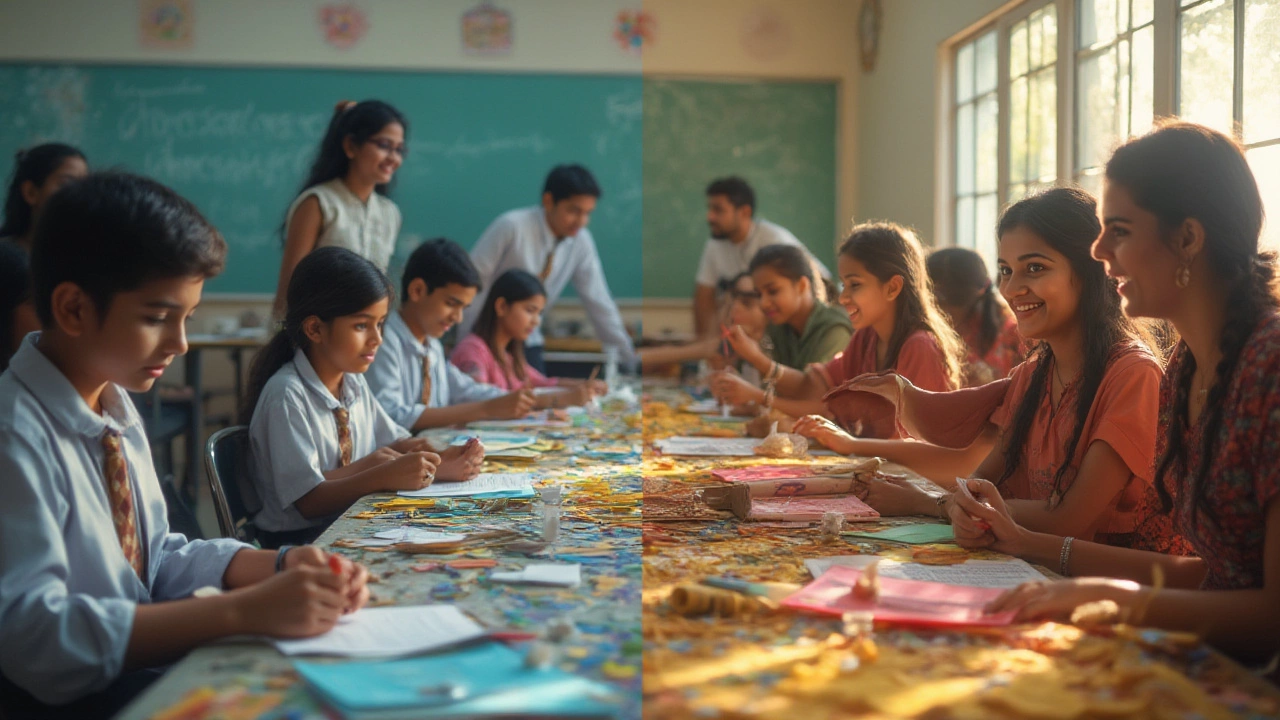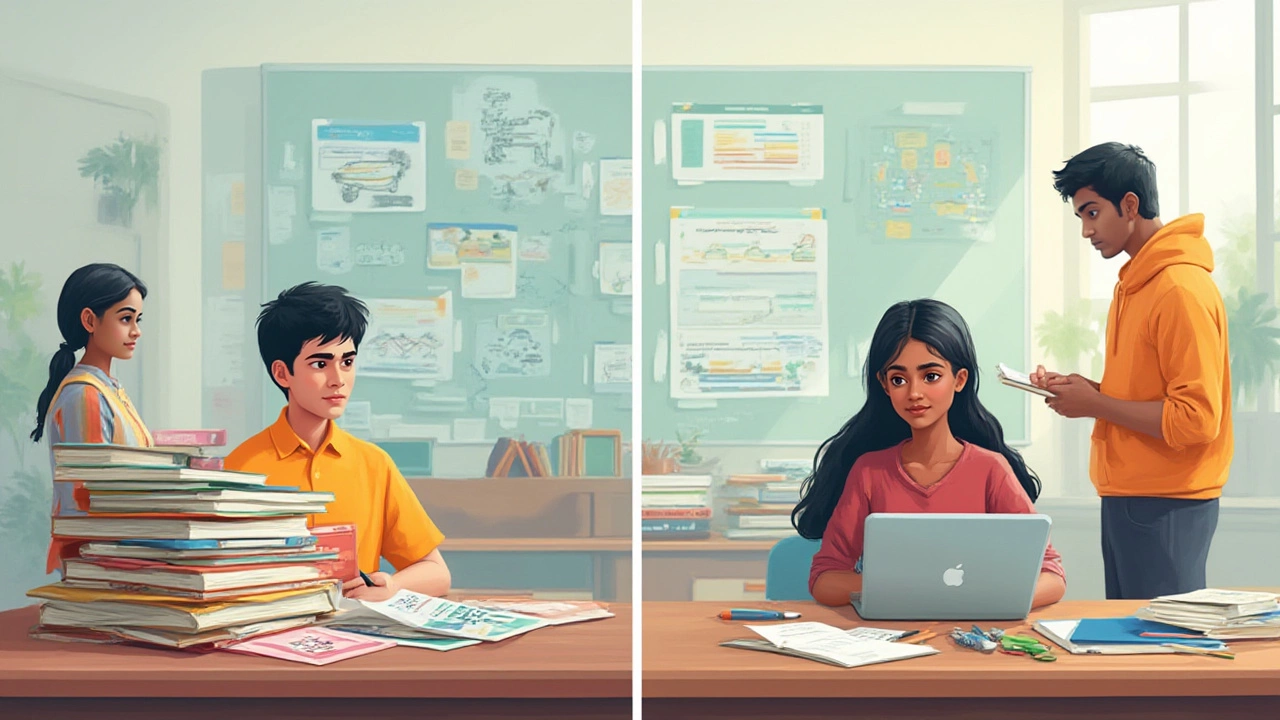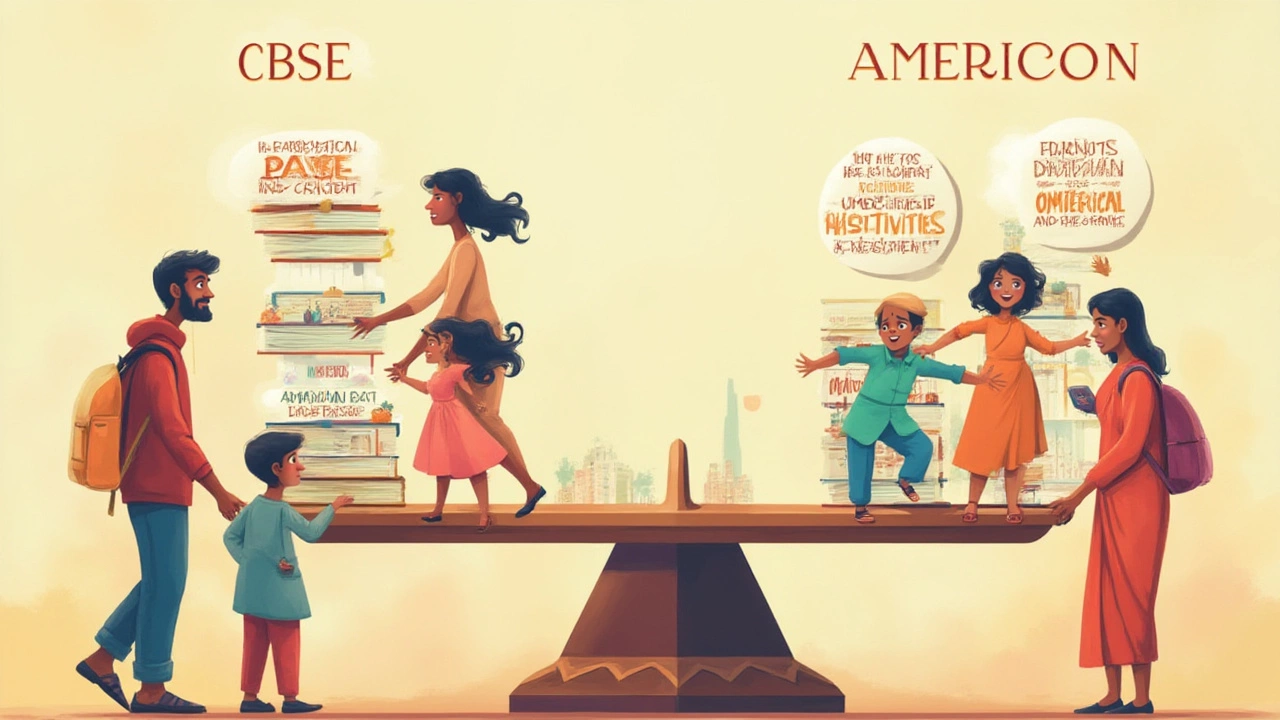
Ask any student who’s switched schools across continents, and you’ll hear the same question echo in the hallway: is the American syllabus really easier than CBSE? Opinions fly fast. Some say American schools are a walk in the park, CBSE is an uphill marathon. Others claim it’s apples and oranges. But here’s the truth—while both systems aim for well-educated kids, their idea of “easy” or “hard” depends on what you value: scores or skills, memorization or mastery, tests or projects.
How Both Syllabi Are Built: A Peek Under The Hood
The first thing you’ll notice looking at American and CBSE syllabi is the layout. Walk into a typical US classroom, and you’ll often see students debating, making posters, or building something. American schools focus on broad subject knowledge, critical thinking, and project work. You might study US history, world geography, a second language, arts, science, and even electives like coding or journalism—all in one semester. There’s flexibility to pick electives and level up (or down) depending on your strengths. Advanced Placement (AP) courses let students dive deeper—but those are optional. The core content doesn’t dive as deep as CBSE in math or science, but covers more topics.
CBSE (Central Board of Secondary Education), used in thousands of Indian schools and international ones too, takes a more rigid approach. The focus is on comprehensive, standardized content. Take class 10 Science: you’ll get all your physics, chemistry, and biology served together. Same for math—trigonometry, algebra, geometry, all bundled tight. The curriculum is heavy on theory, slanted toward concepts that often show up in competitive exams, with a standardized book for every subject. That’s partly why it feels “tougher” to many kids—it’s less forgiving with time, demands strong memory, and there’s little room to swap subjects.
Here’s a sampler of both systems, based on 2025 curriculum guides:
| Subject | CBSE (Grade 10) | US (Grade 10) |
|---|---|---|
| Math | Algebra, Geometry, Trigonometry, Statistics, Coordinate Geometry | Geometry or Algebra II (core concepts, emphasis on problem solving, some statistics) |
| Science | Integrated Physics, Chemistry, Biology, Environmental Science | Biology or Chemistry (project-based, with lab hours; topics vary by state) |
| History | India-focused history, world history basics | US History, World History or Civics, State History (depending on location) |
| Language | English (core grammar, literature), Hindi or regional language | English Language Arts (creative writing, grammar, American/World literature) |
| Assessments | Written exams, limited internal assessment | Assignments, projects, quizzes, class participation, open-book tests |
Teaching Styles: Memorization Versus Application
Step into any Indian classroom, even virtually, and you’ll see rows upon rows of students jotting down notes—sometimes at bullet speed. The culture here is big on textbooks. Your score depends on how well you remember formulas, definitions, and can reproduce them in the board exam. Most CBSE teachers go by the book: classes run according to strict plans, and the phrase “stick to the syllabus” is a mantra. There’s not much room for classroom discussion or ‘out of syllabus’ creativity, mainly because everyone’s racing to finish the syllabus before big year-end exams.
American classes look—and feel—different. Teachers pause for class discussions, workshops, and even games. If a kid wants to bring up a story or idea not in the textbook, it’s often celebrated, not discouraged. The focus is on seeing the bigger picture, connecting dots, and expressing your point of view. Instead of memorizing pages of theory, students learn to research, write essays, present slides, and defend ideas. Science often means real experiments, not just theory and diagrams.
An interesting fact? According to a 2022 Pew Research survey, 68% of US high schoolers said they did group projects monthly, while only 18% of their Indian counterparts in CBSE schools reported the same. It’s a shift from "what do you remember?" to "how do you think about this?"
If you’re a CBSE student used to direct teaching and tight lessons, the American classroom might feel chaotic at first. But if you’re used to being spoon-fed and guided, you’ll discover that US schools reward self starters and problem-solvers—a totally different pressure.

Exam Pressure and Grading: What Really Feels Harder?
Anyone who’s been through the Class 10 or 12 board exams knows the kind of pressure “CBSE life” can unleash. One final exam can make or break your GPA, impact your university dreams, and bring a level of stress that’s honestly brutal. The syllabus is usually completed by January, then comes a barrage of mock exams. Students cram entire textbooks and previous years’ questions, with family, tutors, and sometimes neighbors all getting nervous (or nosy). Your academic fate often boils down to how well you perform during a couple of high-stakes hours.
The American system doesn’t put all its eggs in one basket. Grades are a mix of assignments, tests, quizzes—sometimes even classroom participation and project work. Instead of one big exam, everything you do matters a little. This can take the edge off, relieving the kind of anxiety CBSE kids know too well. But here's a twist: you’ve got to keep showing up. One missed assignment or bad project can pull down your overall grade. There’s no “last-minute savior” moment.
The CBSE scheme might seem scarier, but it’s been accused of rewarding rote learning more than reasoning. American grading can feel unrelenting—you need to be consistent all year. A study published in 2023 by Education Next found that US students, on average, reported 30% less test anxiety than their Indian CBSE peers, but were twice as likely to lose marks for late or incomplete work.
Here’s what really throws students: CBSE marks are absolute, while US grading can be relative. Sometimes, the grade curve helps weaker students catch up or punishes overachievers depending on the class. Either way, your GPA in America is built like a marathon, not a sprint.
Real-Life Skills: From College Admissions to Everyday Confidence
If you think about “easy” in terms of preparation for real life, the American approach seems to have the edge. Why? Because colleges in the US look at more than just grades. Admissions officers want essays, recommendations, project portfolios, and proof you joined clubs or played sports. You learn to present yourself, not just show a report card. Schools often have career counselors, and by graduation, students have presentation, teamwork, and sometimes internship experience. There’s a nudge toward independence—you pick your courses, speak up, ask questions.
With CBSE, the system is more standardized. Standardized tests (like JEE, NEET) still carry massive weight for college admissions. Scoring high means sharp memory, speed, and exam technique. You do pick up resilience, discipline, and the ability to manage huge chunks of information under stress—plus, you’ll probably ace any standardized test you see. But you might not get as much exposure to real-world challenges during high school.
Which is “easier” for college later? If you’re headed to the US, American high school gives you the toolkit for portfolios, essays, and interviews. For a straight academic race, CBSE prepares you to battle big tests. Each system builds different strengths. In 2024, Stanford University’s admissions report showed that 72% of successful Indian applicants came from CBSE or similar “rigorous exam” backgrounds, but all had strong extracurriculars too—proof you can’t just cram your way to the top anymore.

Tips for Students and Parents Navigating the Switch
Switching from CBSE to the American syllabus, or the other way, isn’t just a move—it’s a culture shock. Here’s what you need to keep in mind:
- If you’re jumping from CBSE to American school, be ready to participate—ask, debate, and do your own research. Don’t wait for the teacher to tell you what to do next. Start managing your time and homework yourself.
- For those moving from the American system to CBSE, focus on building memory techniques, quick note-taking, and understanding exam patterns. Coaching classes or online mock tests can help bridge the content gap.
- Parents: be gentle during the switch. Newcomers to CBSE often struggle with the sheer volume of content, while those entering US schools may feel lost without rigid guidance.
- Take advantage of online resources. Platforms like Khan Academy, BYJU’S, and Coursera are packed with tips and sample problems for both systems.
- If you’re aiming for college abroad, start prepping early. Build your profile, get involved in extracurriculars, and keep solid records of projects and leadership roles.
Deciding which syllabus is “easier” isn’t about the questions on paper—it’s about figuring out what you want from your education. If you want challenge and competition, CBSE’s structured grind builds discipline. If you value creativity, teamwork, and communication, the American system might feel lighter and more freeing. And if you just want to survive and thrive? Learn how to adapt, and you’ll win—whichever classroom you sit in.
